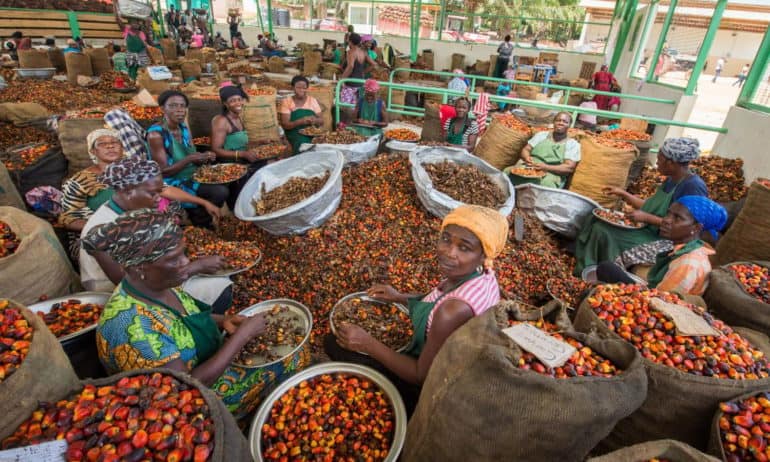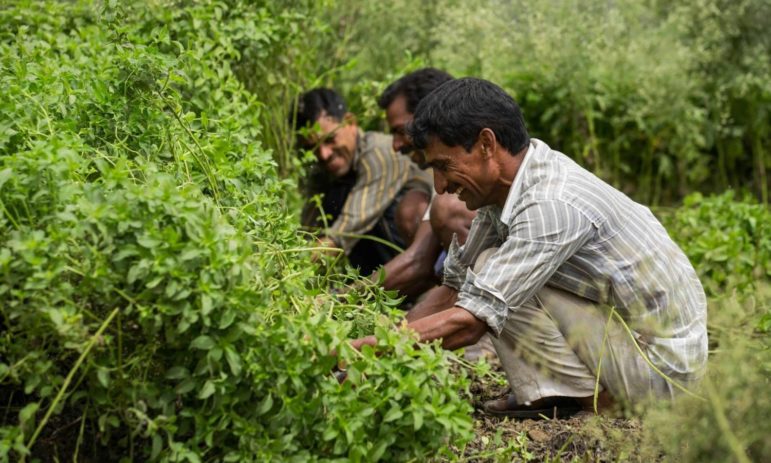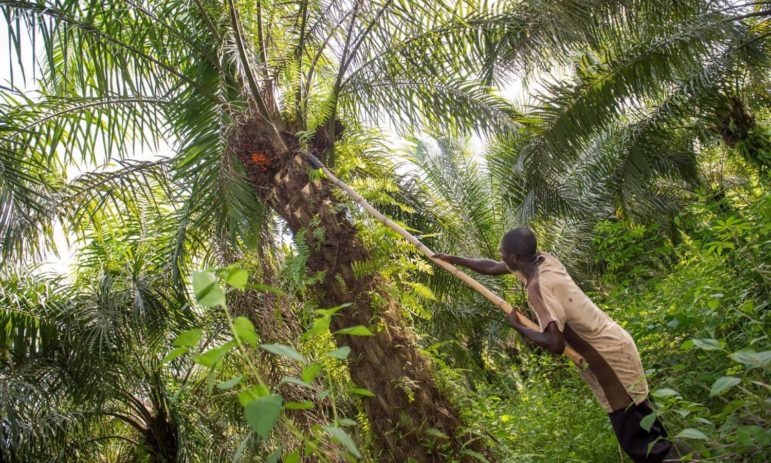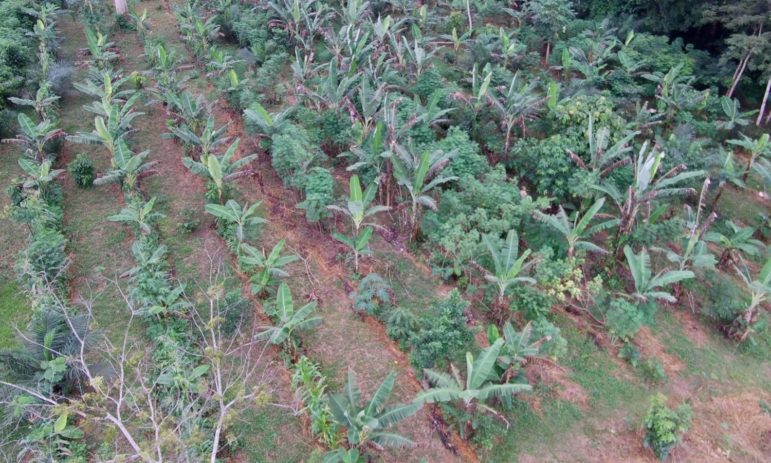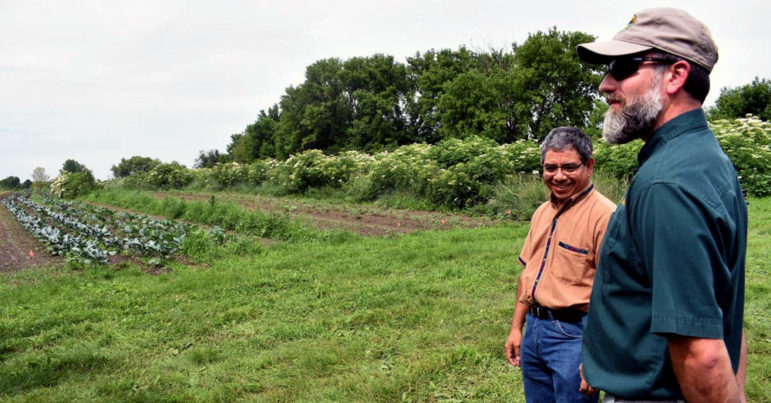“Regenerative agriculture provides answers to the soil crisis, the food crisis, the health crisis, the climate crisis and the crisis of democracy.” — Dr. Vandana Shiva
Two of the most serious and intractable crises pressing down on us—in North America, Europe and worldwide—are the immigration crisis and climate change.
Most of the media coverage of these issues until now has focused on the bad news:
“Hottest Year Ever,” “CO2 Concentrations in the Atmosphere Rising,” “Trump Determined to Build a Wall,” “Thousands of Immigrant Children Separated from Their Parents and Locked Up,” “Another Boatload of African Refugees Sinks in the Mediterranean,” “Immigration Crisis Polarizes EU.”
Unfortunately, there’s been little or no discussion about the interconnected roots of these crises and, most importantly, the good news: that there are positive solutions at hand.
Almost nowhere will you find a news story or commentary that connects the dots, as Vandana Shiva puts it, between “the soil crisis, the food crisis, the health crisis, the climate crisis and the crisis of democracy.”
Yet, not only are these contemporary crises—forced migration, the climate crisis, and others—interconnected, but in fact there are shovel-ready, tried-and-tested solutions to these mega-problems right under our feet, at the end of our forks and knives, and ultimately in the way that we vote, not only at the ballot box, but with our consumer dollars.
[embedyt] https://www.youtube.com/watch?v=9bwkWv2Rllk[/embedyt]
Of course the long-term solution to the international crisis of forced migration—creating rural peace and prosperity in people’s home communities so they won’t want to leave their homes and families in the first place—will not solve the immediate emergency that millions of our neighbors to the South face.
The women, men and children currently fleeing violence and persecution in their home countries deserve humanitarian assistance and asylum as long as drug gangs, sectarian militias, and corrupt, authoritarian regimes threaten their very survival. Cruel and immoral treatment of so-called “illegal aliens” by the Trump Administration (and unfortunately the Obama, Bush and Clinton administrations before them), along with enforcement practices that criminalize refugees and deport undocumented workers, must be exposed, resisted and reversed.
The injustices of current immigration enforcement practices are especially hypocritical and cruel given that the primary drivers of the out-of-control crime, poverty and violence that plague Mexico, Central America, Africa and the Middle East are misguided and immoral U.S. and EU foreign policies, such as the so-called War on Drugs, Free Trade Agreements (NAFTA and the WTO), disastrous attempts at “regime change” in Iraq, Syria and Libya, and support for corrupt governments and corporations.
The global body politic, especially in the U.S. and Europe, needs to acknowledge that decades, indeed centuries, of imperial, racist, corporate greed and prejudice lie at the root of our current migration crisis.
On the other hand, the practical, long-term solution to the immigration crisis is not simply to “open borders” and grant asylum, in the U.S. or western Europe, to several hundred million persecuted and exploited people from the global South. The better solution is to reverse the foreign and domestic policies, especially trade, drug war, agricultural and land-use policies, that are driving people from their homelands in the first place. To do this, the global grassroots will have to work in cross-border solidarity to help people everywhere regenerate, not only their politics, but also their landscapes and agriculture in order to restore soil fertility, food quality and the livelihoods of small farmers. Beyond reducing the pressures driving forced migration, this regeneration process will allow us to draw down a critical mass of the excess atmospheric carbon into our soils—carbon that is heating up the planet, destabilizing the climate, and exacerbating poverty, soil degradation, crop failure, malnutrition and societal violence.
The recent election of Andres Manuel Lopez Obrador (AMLO) and the MORENA (Movement of National Regeneration) Party in Mexico provides positive proof that decades of misrule and drug violence can be turned around through grassroots organizing, protest and electoral insurgency. President-elect Obrador and the MORENA party, who will take power in December, have promised to deal head-on with the migrant crisis, poverty, the failed war on drugs, political corruption, food sovereignty and the climate crisis.
If MORENA can launch a Regeneration Revolution in Mexico, under extremely adverse conditions, then so can we in the U.S., Europe and other affluent nations.
What are the regenerative solutions we’re talking about? Let’s review some of the basic concepts of regenerative food, farming and land use.
If you’ve never heard about the amazing potential of regenerative food, farming and land use (i.e. regenerative organic farming and grazing, reforestation and landscape restoration) to improve the quality of our food, our health and our environment, while simultaneously drawing down enough carbon from the atmosphere through enhanced photosynthesis to reverse global warming (when carried out in conjunction with the transition to 100-percent renewable energy) you’re not alone. One of the best-kept secrets in the world today is that the fundamental solution to global warming and climate change (as well as rural poverty, forced migration, nutrient-deficient food, deteriorating public health and civil strife) lies in rejecting degenerative agriculture, forestry and land- management practices and instead embracing regenerative alternatives. We need to jump-start a global process of re-carbonizing and restoring our soil and forests through qualitatively enhanced photosynthesis and regenerative organic practices, getting trees and perennial plants back into all of our landscapes, and drastically changing our food production, animal husbandry and consumption practices.
By bringing our soils, plants, forests, waters, biodiversity, animals (and humans) back to full life and vigor, we can regenerate over the next 25 years not only climate stability, but also public health. Additionally, a Regeneration Revolution will revitalize our rural and urban economies; alleviate poverty (most of the world’s poor live in rural areas); reduce forced migration, hunger and malnutrition; and rekindle a common sense of hope and solidarity in the global body politic.
Regenerative food, farming and land use (combined with the transition to 100-percent renewable energy), gives us our best and last chance to not only survive global warming and re-stabilize the climate, but to thrive—with healthier food, fiber, animals, people and local economies as our reward. By bringing together a critical mass of the world’s 750 million rural farmers, farmworkers, ranchers, herders and fishing communities with several billion of the world’s urban consumers—workers, students, policymakers, business leaders and investors—we can safeguard our common home and our common future, and resolve the interrelated crises of forced migration and climate destabilization.
Elsewhere we have provided a more detailed description of regenerative food, farming and land use.
Please review the materials on our website if the world-changing concepts of regeneration and carbon drawdown are new to you.
But for now, here are three basic steps we need to take if we are serious about solving the immigration and climate crises.
Step one: regenerate global solidarity
We need to support national and international politicians and policies that promote rural prosperity and peace, so people are not forced to migrate.
We need policies and subsidies that keep the world’s 3 billion small- and medium-sized farmers and rural villagers on the land. These farmers need to receive an equitable wage or Fair Trade price for their products in exchange for producing healthy, organic and regenerative food and fiber in an environmentally and climate-friendly manner.
We need to educate consumers and reward farmers, ranchers and rural communities for producing healthy food, building up soil health, sequestering carbon from the atmosphere and restoring our forests and wetlands. Unfortunately, what we have today are domestic policies and international trade agreements that subsidize giant polluting factory farms, multinational corporations, unhealthy processed food, GMOs and agro-industrial exports—policies that have driven millions of desperate rural families into forced migration or have left them little choice but to join drug cartels or sectarian militia groups like ISIS or the Taliban.
We need to focus on food sovereignty and self-sufficiency instead of corporate globalization and GMO, chemical-intensive agriculture—both at home and abroad.
Step two: regenerate food, farming and land use
We must move to reverse, not just mitigate, global warming by adopting organic and regenerative food, farming and land use practices. Cook organic, not the planet.
Climate scientists repeatedly have warned us that we must stop burning fossil fuels and destroying our environment and soils—thereby supersaturating our atmosphere and oceans with greenhouse gas emissions—or else we are doomed.
If we are going to avert catastrophic global warming, we must change our energy, agricultural, land use and consumption practices so as to drawdown as much carbon as possible from our overheated atmosphere and transfer this excess load of carbon, through enhanced photosynthesis, into the living soils of our croplands, pasturelands, forests and landscapes, where it will improve food quality, environmental health and rural livelihoods.
The only way we can possibly carry out this Great Drawdown quickly enough to avert runaway global warming is to help the world’s 3 billion farmers and rural villagers stay on the land and farm regeneratively—especially in the world’s warm, sub-tropical and tropical areas, where billions of acres of soils and forests can absorb and sequester the most carbon, and where poverty and desperation are the worst.
In other words, through our political activity and our food choices as consumers, we must help the world’s farmers and rural villagers become self-sufficient peacemakers and regenerators, instead of forcing them to choose between becoming growers, smugglers or soldiers for the drug cartels, or risking their lives and their liberty as forced migrants, undocumented workers and refugees.
We must help create the conditions for peace and rural prosperity in the impoverished conflict zones in the Global South or we will never solve the immigration or the climate crisis. With the regeneration of rural communities and landscapes, and a move away from counter-productive drug laws and foreign policy support for corrupt and criminal governments and corporations, we will see not only a massive reduction in the number of forced migrants across the world, but a surge of reverse migration, with millions and millions of forced refugees voluntarily returning back home to their rural communities and families.
Step three: regenerate politics
As members of global civil society we must plant peace, not poverty and war. End the drug wars. Legalize marijuana and all drugs. Treat drug addiction as a medical problem, rather than a criminal offense. Stop the war on nature waged by out-of-control transnational corporations. Stop supporting corrupt governments and corporations. Get political. Throw corrupt politicians out of office with a ballot box revolution. Use your consumer dollars to promote positive change. Stop subsidizing industrial agriculture, factory farms and GMOs. Rebuild soils, restore forests, watersheds, biodiversity and perennial eco-systems along with regenerating your own and society’s personal health.
Together, North and South, we can draw down enough carbon from the atmosphere to reverse global warming, re-stabilize the climate, create rural prosperity and end forced migration. Join the growing global Regeneration Revolution. Sign up for our Regeneration International and Organic Consumers Association newsletters and action alerts today.
Ronnie Cummins is international director of the Organic Consumers Association and a member of the Regeneration International steering committee.

